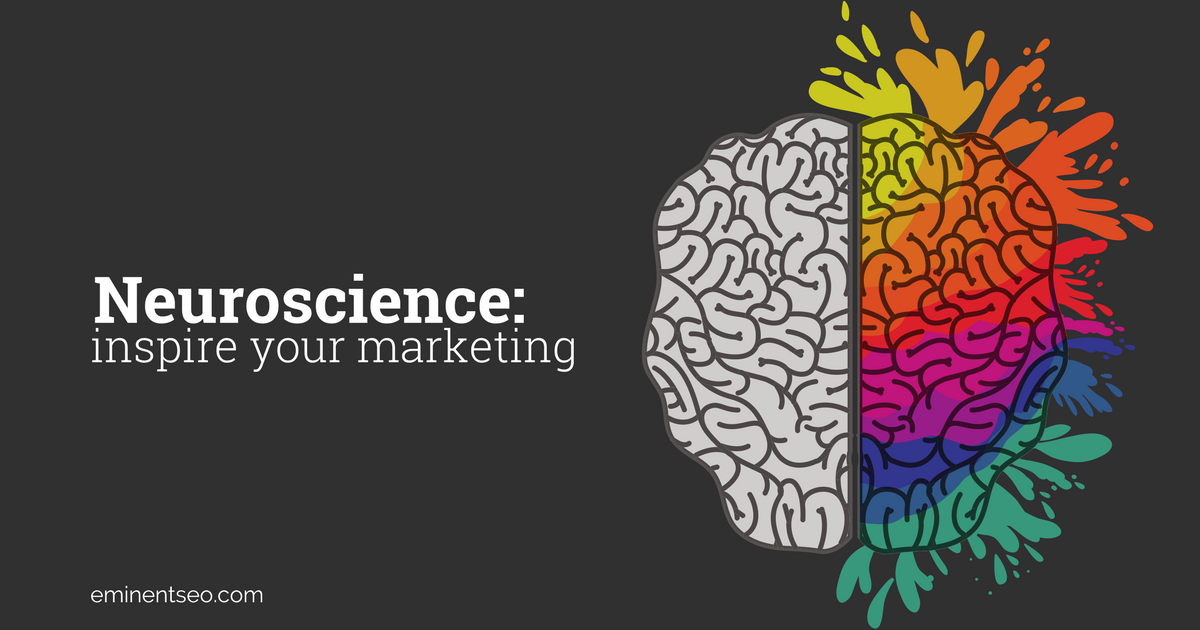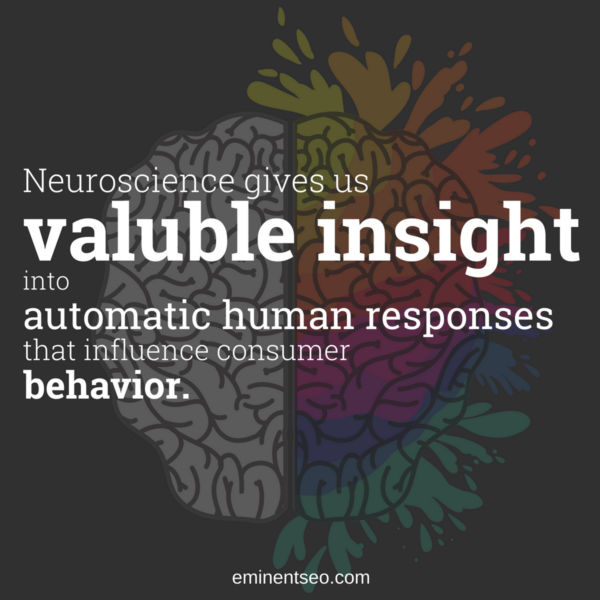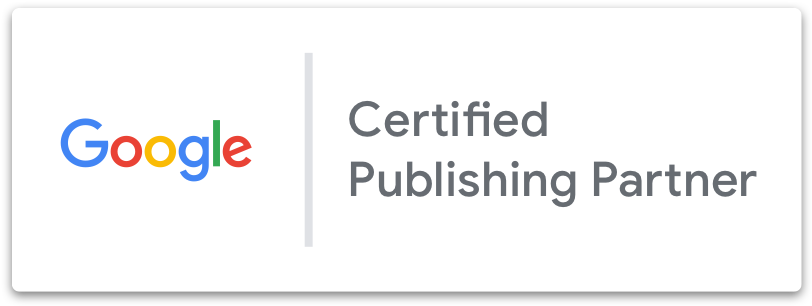
There’s an intuitiveness to digital marketing that if your campaigns aren’t geared toward each platform uniquely, your advertising and social spends may miss your proposed target audience. Why?
Whether we, as consumers, like it or not, Facebook, Google and other social channels and search engines respond to our behaviors online. It’s the way we receive direct and indirect promotional messaging based on our interests.
Yes, “big brother” is watching our every move. But, there’s another way that marketers can learn about consumer interests and it has everything to do with how we think, feel and react – subconsciously. If you’re thinking, “This sounds complicated,” it is – yet, it isn’t.
The term is called neuromarketing. In short, neuromarketing is based on the head games we play with ourselves, unknowingly.
NEUROMARKETING = 1 PART BRAIN + 1 PART EMOTION + 1 PART RESPONSIVENESS
Chances are you’ve already seen examples of neuromarketing in your day-to-day but weren’t aware of it. That’s the beauty of it – when neuromarketing is executed correctly.
Playing off the way humans react to stimuli (products/services messaging), neuromarketing provides mechanisms to measure:
- What we respond to,
- When we respond,
- Why we respond, and
- How to tailor branding and sales initiatives to increase conversion rates.
I’ve found some great examples of successful neuromarketing campaigns to share, but before that, let’s dive a little deeper into the way market researchers use technology in neuroscience to get a better understanding of what drives human behavior in the sales funnel.
The Before and After of Neuromarketing
One of the more challenging aspects of predicting how your target audience is going to react to your brand or promotional messaging is that you can’t predict it. People are fickle. Emotional. Transient. Impulsive.
There is no magic trick or special sauce (except for McDonald’s’) that will draw prospects and existing customers to your business. However, neuromarketing can test the waters, so to speak, and provide a consensus of what to expect.
Focus Groups Represent Consciousness
Many marketing agencies will set up focus groups to gauge consumer interest and opinions before a hard launch of a new product or update to a brand. What neuromarketers can do to enhance a focus group session is to bring the science of the subconscious to meet head on with consciousness. This is where it gets interesting – in fact, humorous.
How Often Do We Mean What We Say and Say What We Mean?
Ask your friend if they like Sriracha sauce and you’ll get a roll of the eyes with a screeching, “Well duh, who doesn’t?” Then you ask if she wants to head to Burger King for a Sriracha-infused fish sandwich and the response is, “GROSS!”
Maybe she doesn’t like fish? Perhaps she has an aversion to anything Burger King. But she said she liked Sriracha sauce.
This is part of the challenge in neuromarketing: the many variables of human nature that make what we say not always an accurate assessment of what we mean or how we feel.
The Nitty Gritty of Neuromarketing

The “A” ad might show the same copy with a different design or image than the “B” ad. The viewers’ brain activity can give an indication of their subconscious response to each.
EEG images are also used to show how a person emotionally responds to a product or service, depicted on the web, print or broadcast. For online-specific campaigns, neuromarketers track where a person’s eyes move about a webpage, usually going to the most prominent areas of the ad first.
Once noted, marketers can then use the information when choosing color palates for their brand. This also indicates where the primary messages should be placed (layout-wise) for maximum traction, increasing the click-through rate.
There are numerous ways that neuromarketing has come to light and can assist in the go-to-market, prelaunch process. Now, let’s put some sizzle to the science.
Neuromarketing Puts the Snap, Crackle and Pop Back in your Advertising
Perhaps the golden ticket in an advertiser’s ability to successfully tap into the mind of a consumer is by making the experience memorable. The most powerful part of the prior sentence is the word experience.
If you can create an experience for the user, it will be more memorable, will evoke emotion, decrease bounce rates, increase time spent viewing, build more relationships and convert more sales – even if you’ve only got their attention for three to five seconds. How?
- Poke their curiosity.
- Challenge their intellect.
- Ask their participation.
- Reach their comfort zone.
Not every marketing campaign will hit all four goals noted in this list, but it’s something to keep in mind when considering how neuromarketing can go to work for your business.
5 Examples of Neuromarketing by Household Brands
Neuromarketing invokes the subconscious, allowing advertisers to sway behavior based on emotion without thought…stirring the deeper recesses of our brains. Through neuromarketing, marketers hope to engage our internal chemistry, and that may not come with specific reasoning, but more from responsiveness based on memory or deep-rooted cognition from another time that provides appeal in the present moment.
Apple
While many businesses will pull out all the stops to try to win your attention and, ultimately, loyalty, some companies have a distinct brand presence – so much so, that there is no other brand like them. Their brand is their calling card. Apple defines this strength.
Neuromarketing in this instance showcases the power of simplicity because Apple’s positioning is always about its singularity. In a sea of competitors, Apple is always at the forefront of the industry wave.
When introducing the iPhone, Apple used imagination and how consumers feel separate yet connected by their mobile device, allowing them to enter and exist in their own world – just by turning them on. Apple pokes at the viewer’s curiosity.
Trivago
The online travel booking company Trivago uses the anchoring or comparison approach in its market positioning. Trivago’s brand ambassador presents a specific destination and then lists options for hotels and other accommodations that the consumer may not readily find if they use another booking company.
M&M’s
Other examples of neuromarketing focus on the brain’s reward center, the same area of the mind that responds to all things pleasurable: sugar, alcohol, drugs and sex. Yes, these are substances that have addictions associated with them. But there’s a reason for that.
Human beings respond to people, places and things that excite the senses, sending messages to the brain that spur desire, anticipation, expectation and reward. Once experienced, the body will then respond in the same way to sight, sound, scent and touch that relates to the first experience. M&M’s draws from this aspect of neuromarketing.
For the last several years, milk chocolate and peanut M&M’s have been depicted as human-size products. Oh, what would it be like to have a 66-inch M&M to nosh on? Fantastic!
Lay’s
This next neuromarketing example is my favorite of 2018 so far: the Lay’s Potato Chip “Operation Smile” bags campaign. I think this one is brilliant! A product packaging rebrand that brings experiential marketing to a multi-layered level. Each potato chip flavor has its own redesign, with the very top of the bag portraying a different smile. After all, smiling is contagious.
The consumer can then take the bag, hold the top of it in front of their own mouth and convey a smile. Just the act of doing it makes the consumer smile, laugh and invite them to share it with their friends or family.
In addition, because each flavor has its own design, consumers may want to buy more than one flavor to experience all the smiles. And when the chips are gone, they will be hard pressed to find another potato chip brand experience to equal what Lay’s offers. Remember, you can’t eat just one.
Clever Turns of Phrases
For targeted audiences by age or geographic area, a marketer might want to tease their memory by tugging at something familiar but with a twist. Known as hippocampus headlines, these clever phrases of copy often use an American adage and change just a word or two near the end.
This draws the audience to what they know, holds their attention and then keeps them considering the message because of the shift. I don’t know of a campaign that uses the following phrase, but it would be ideal for a water-flavoring product:
You can lead a horse to water but you CAN make him drink.


An unusually brain stimulating post! Neuromarketing is something I’ve always desired to apply it, especially on content snippet and short graphic insight. But the net still doesn’t have enough material on this idea. Well appreciated!
Thank you for your kind words! That’s why we keep writing on neuromarketing; there’s just not enough out there on this discipline yet. Did you catch our first blog post on it yet? https://www.eminentseo.com/blog/what-is-neuromarketing-vs-traditional-marketing/